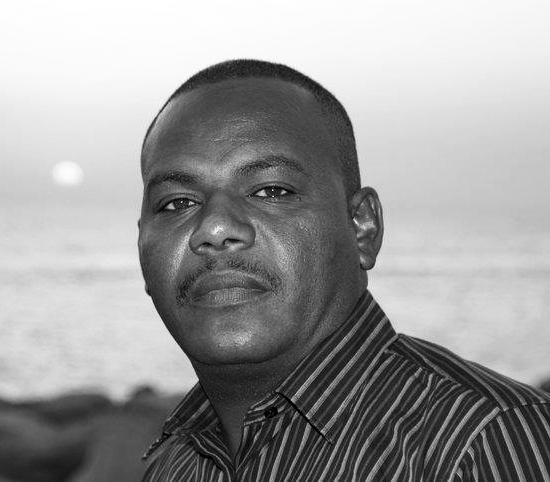
The Sit-In State: Excavations of the Spirit and Body
Al-Asmai Bashari
In the sit-in square
Barricades.. Oh, the barricades
They are the limit of the terrain
Between the past of drought on a childs face
And the future warmth of this crowd
They are the last castle of love we have to defend the river within us
They are the last thing we ask the earth about
When it intends to rise
Bakri Al-Waseela
The question of identity has represented an eternal concern, moving from one era to another, without ever being definitively answered in the fields of thought, culture, and Sudanese society. What is its place in definition, and what are its conceptions in the relevant contexts?
The Sudanese intellectual has not been courageous enough, as the sterility of his old methodology and the traps of his traditional political thinking have failed to address the major future questions. Historically, the question of identity has remained since the formation and rise of the Sennar and Darfur narratives in the Middle Ages, passing through the Turkish and British colonial rule, and in between, during the Mahdist revolution, which marked the beginning of what is known as the nation-state. This pivotal question has often been subject to incomplete, shaky, and sometimes hesitant answers. Moreover, it has frequently led to the distortion of history and the falsification of reality, as a significant error committed by a group of researchers and historians who sided with one culture over another, and with specific social forces, ignoring other forces, their culture, and their role in the course of civilizational giving.
The demand for an answer to the question of identity intensified after the White Flag Revolution in 1924. Afterwards, intellectuals of the thirties and forties of the last century were preoccupied with trying to answer, albeit timidly, the question of who we are? However, they fell into the trap of the Arab-Islamist and Africanist duality.
As for the post-independence nation-state, the role of the intellectual has clearly declined, and his presence has somewhat receded, amidst the dominance of the political voice and its expansion. The politician, who lacks the tools to answer such a sensitive question and the ability to discuss it openly and beyond what we call in political literature gains and losses. However, during the same period, the sixties and seventies of the last century, the questions axis exploded in another field. It became an essential question in the fields of literature and arts. This gave rise to what is called the Forest and Desert School, a movement that tried to answer amidst a fierce political struggle and transformations in the structure of political conflict. However, the movement was weak, and its wave subsided with the departure of its pioneers, leaving no trace behind.
Of course, no one can deny what the political Islam authority has practiced during the past thirty years of our modern states life and the destruction it has caused culturally and intellectually before politically. Ugliness spread, and the official state, in the name of its civilizational project, aimed to kill the consciousness building blocks of the identity question, to the extent that it almost died if it were not for two enlightenments. The first was attempted by the Sudanese Writers Union through its orphan scientific conference and its question about our civilizational lineage. The second came through the General Authority for Culture and Arts in Sharjah, which hosted a conference addressing the Sudanese identity from the perspective of arts.
Since the glorious December revolution ignited, the Sudanese spirit has recovered, and the body has enjoyed life in the sit-in state, which evoked Sudanese epochs with its bright history and vast geography, symbolizing the culture of diversity and multiple ethnicities and longing for eight thousand years of our ancient history with great will and awareness. The sit-in was actually the sacred book of Sudan, whose aesthetics were penned by revolutionaries and Kandakas with blood and tears. They painted its picture with the brush of self-denial and selflessness and blending into the image of the other with love that interacted within its framework. The colors of the Sudanese people, with their various cultures and religions, mingled in a way that had never happened before. So, has the major and betrayed sit-in state truly shaped the identity of the Sudanese?


